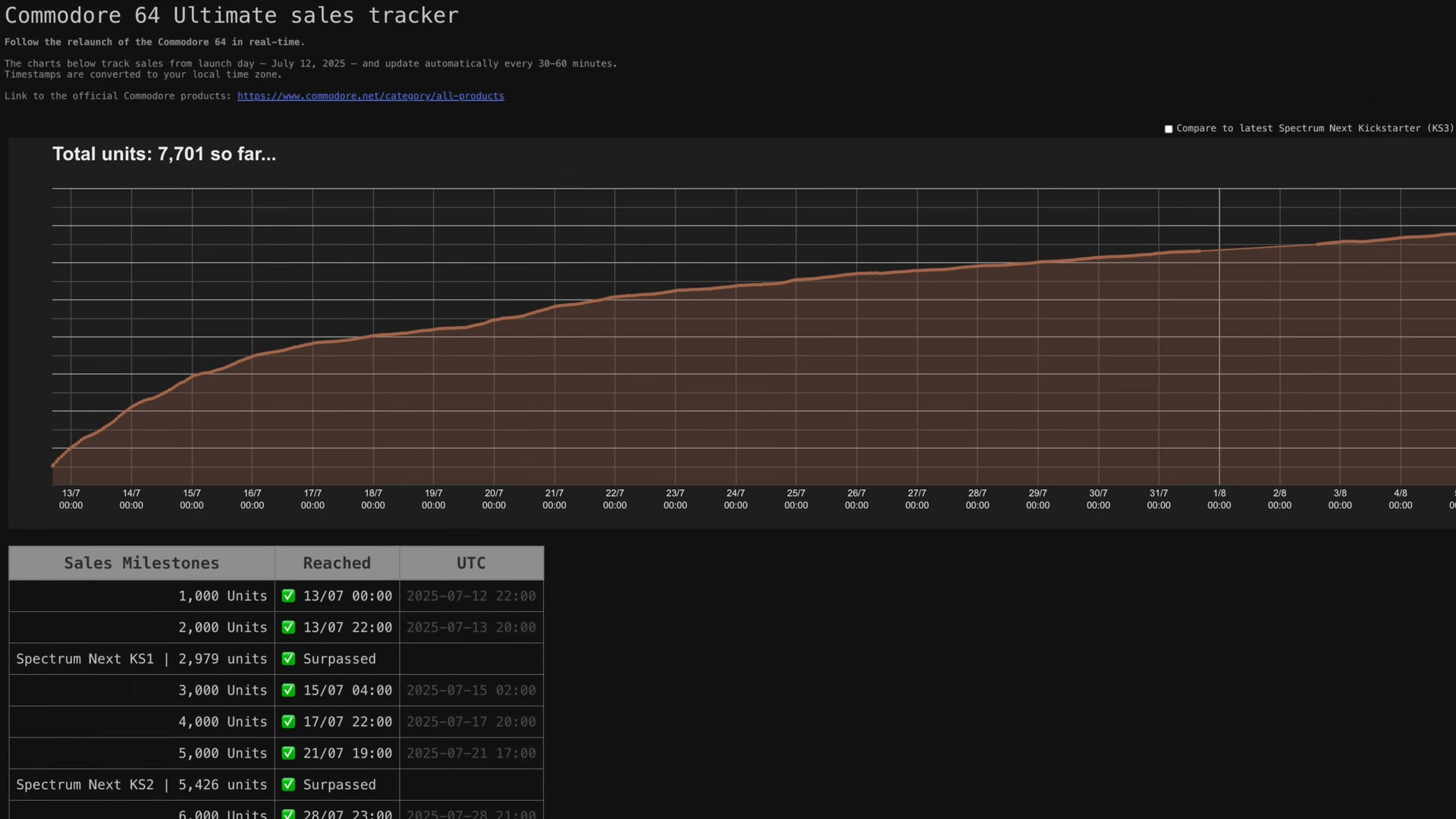Commodore raked in over $2 million during the new C64 Ultimate's debut week — roadmap will include three major releases a year
The CEO says his primary role is to ensure the new Commodore “isn’t a bankrupt Commodore.”
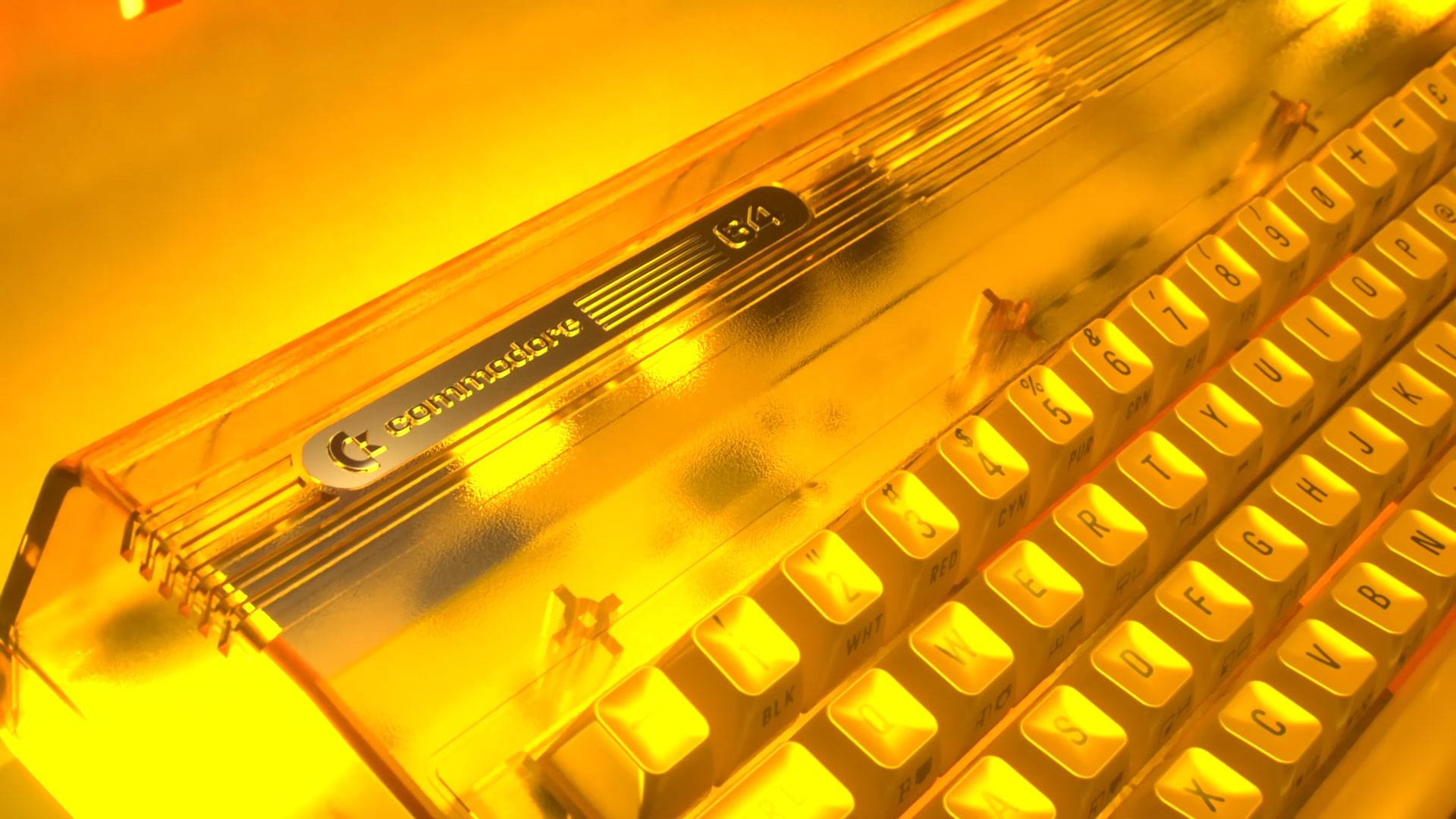
New Commodore owner Peri Fractic (AKA Christian Simpson) has posted an update on the success of the company since it made it safely into the arms of its fans. In the latest video installment, Simpson shares the important news that Commodore is already thriving. Moreover, we get a look inside the factory where the new Commodore 64 Ultimate computer is being made, details about the included operating system software, and even more teasers mentioning future products with flavors of Amiga technology.
Let’s talk business first. Simpson revealed that this Commodore purchase deal, eight months in the making, has been secured with the help of angel investors and following the barnstorming sales of the newly reinvigorated company’s first product. The money is now in escrow, it seems.
Billed as the company's first hardware release in over 30 years, the new Commodore 64 Ultimate (and its less glamorous brethren) have been doing a roaring trade. Particularly strong take-up of the gold-hewn Founders Edition has helped boost receipts.
Simpson shared the above chart, which he says represents the first week's sales volume of the new Commodore 64 computers. What you see represents about $2 million worth of computers sold to customers. The period shown spans the first pre-order week.
Of that $2 million, about half goes toward production, said Simpson. There’s also a significant portion allocated to the acquisition pot, as well as future product R&D costs. However, “Commodore now has money in the bank,” which is an important point, the new CEO emphasized.
Simpson noted that he keeps one thing in particular in focus. Commodore famously went bankrupt in 1994. Subsequently, the name went through a low point (or two), lending its branding power to lowly commodity electronics, such as paper shredders. This shouldn’t be allowed to happen again, and Simpson asserts his primary role now is to make sure the new Commodore “isn’t a bankrupt Commodore.”
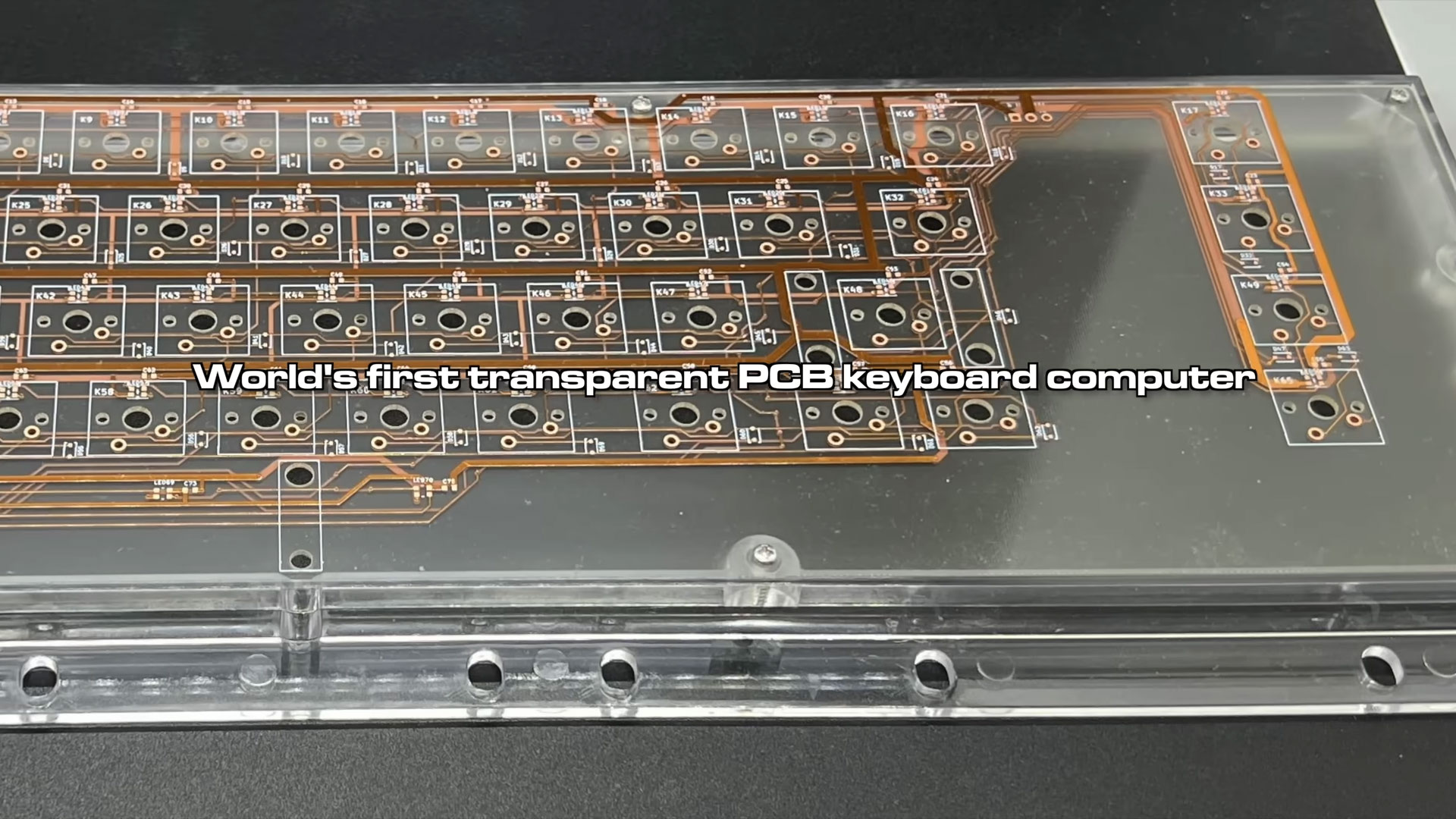
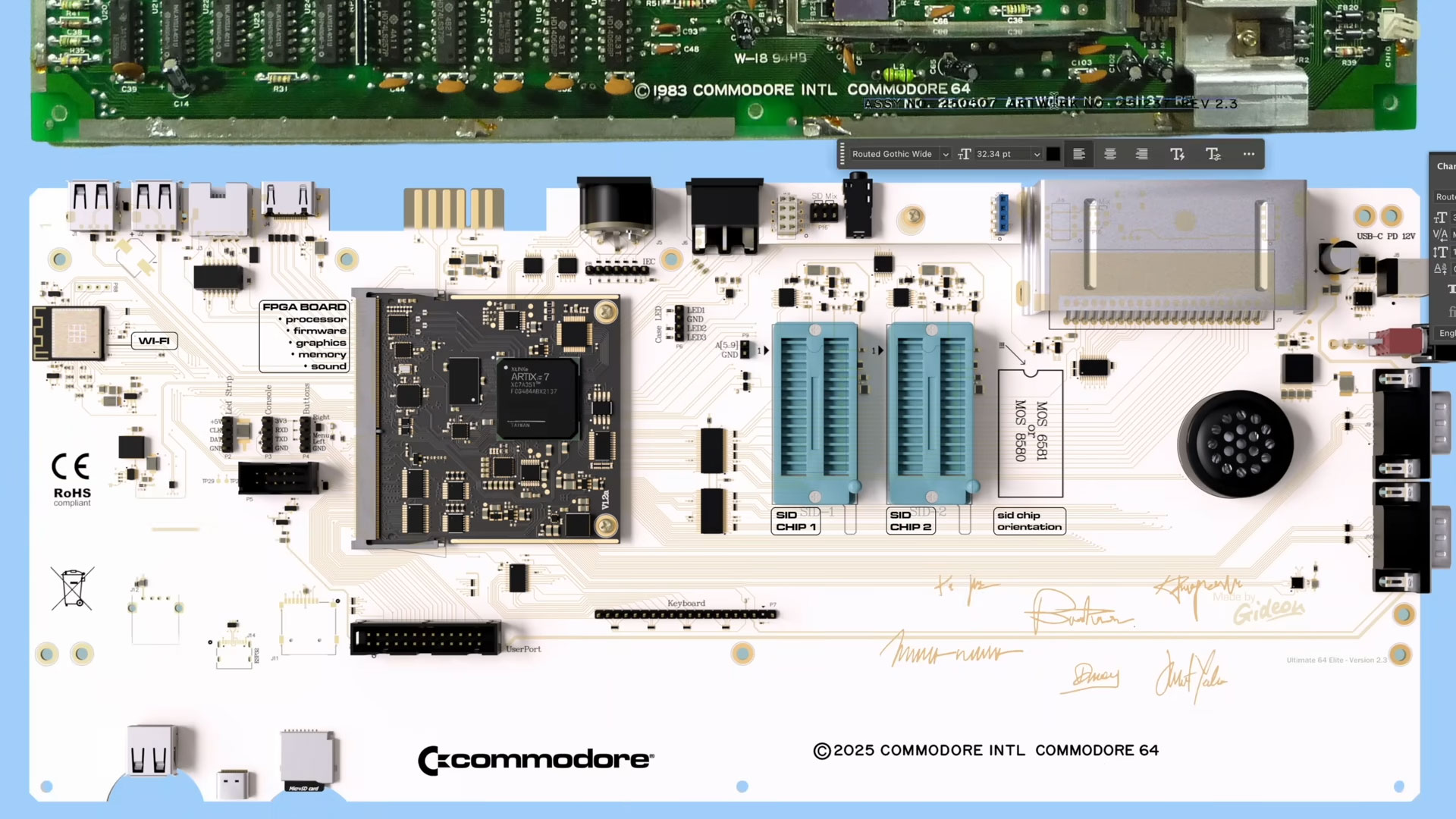
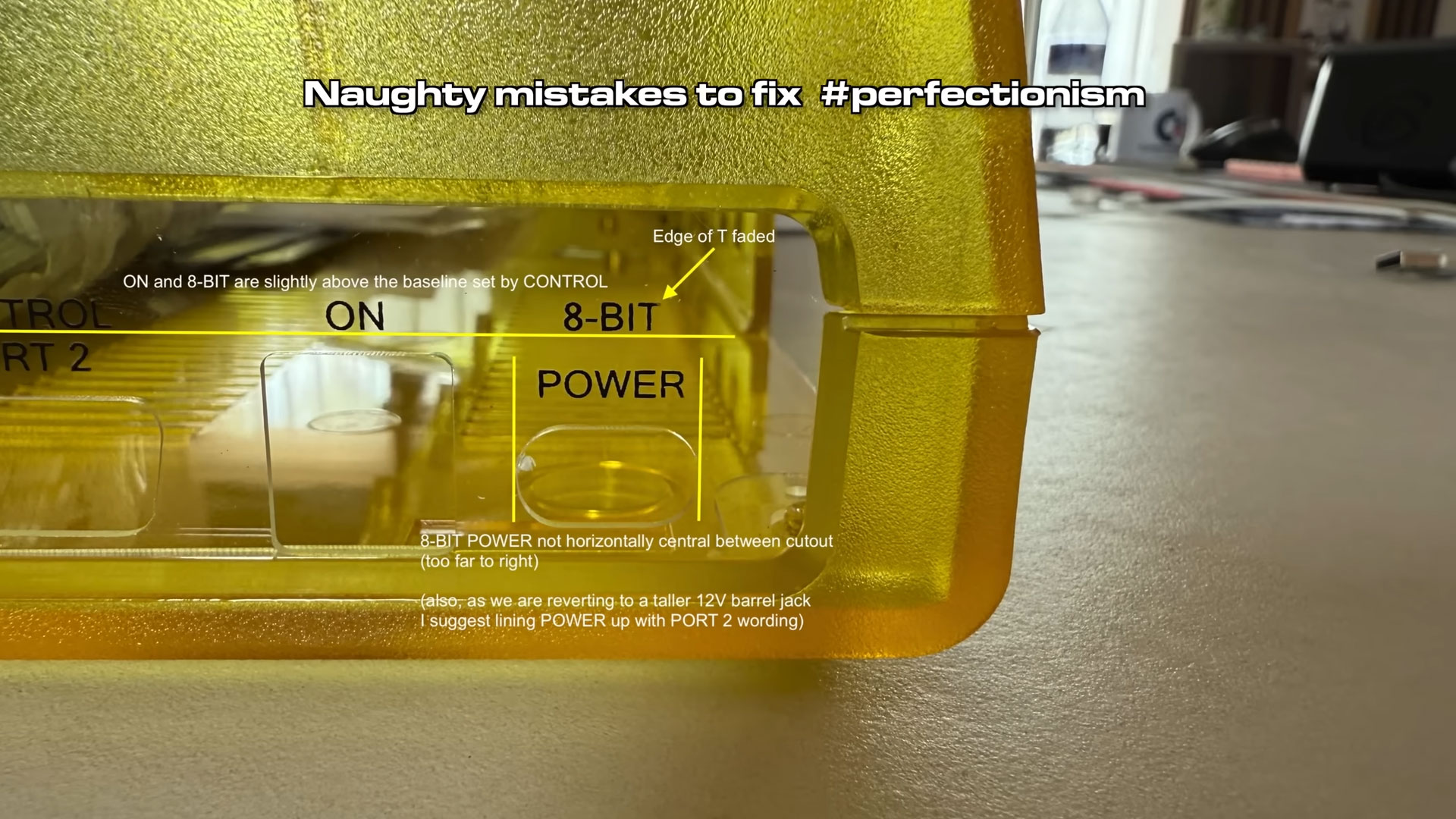
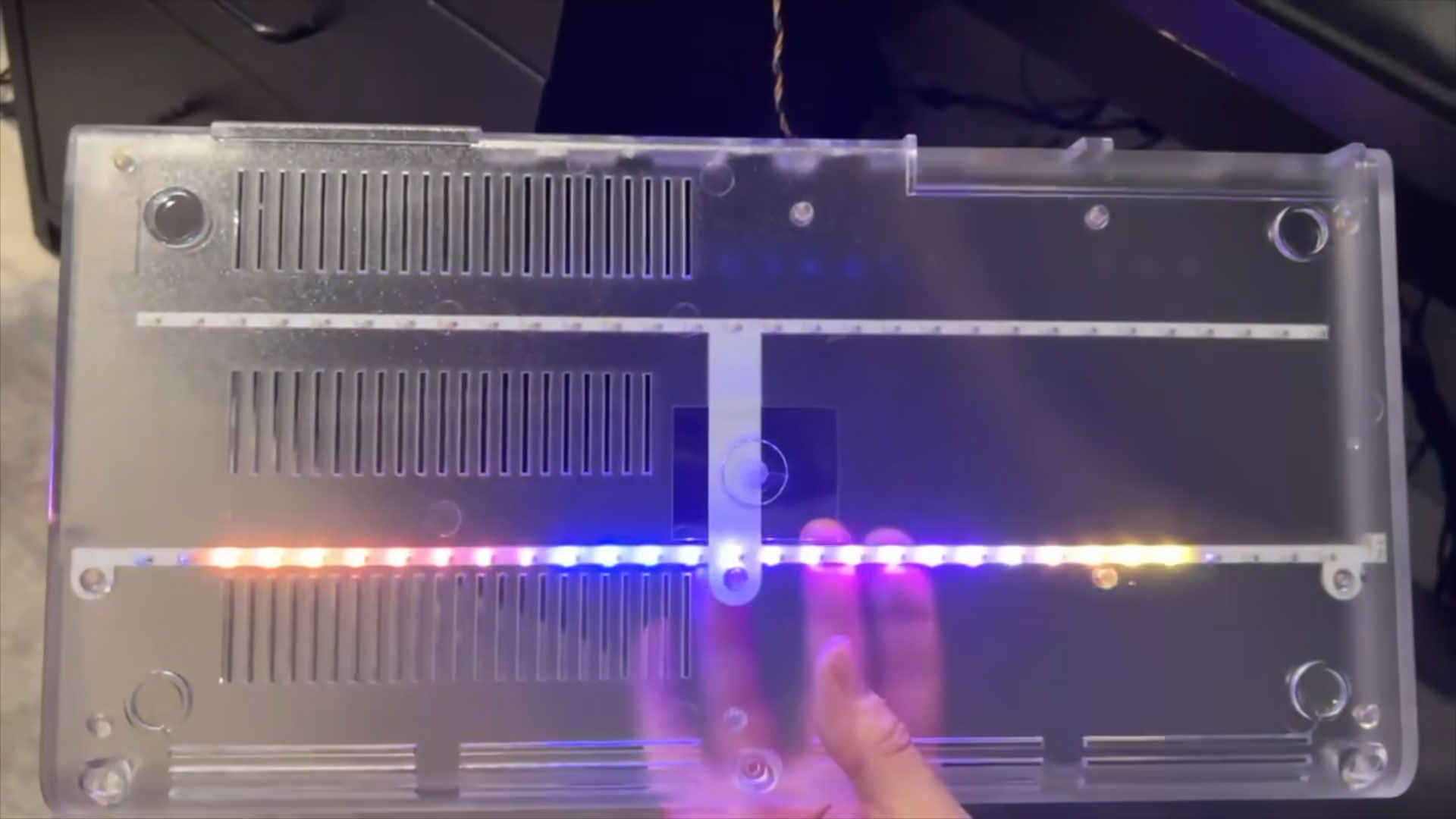
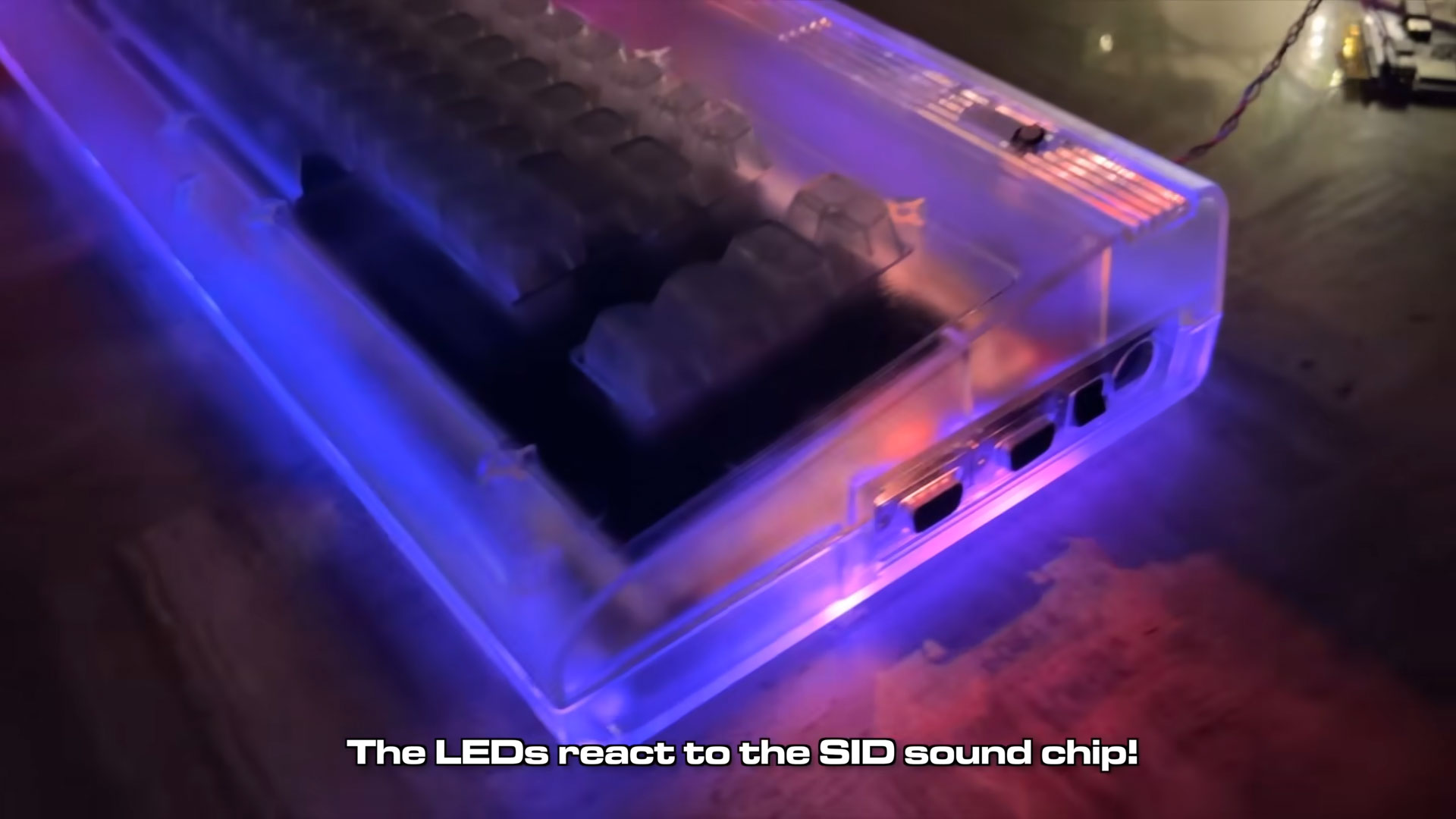
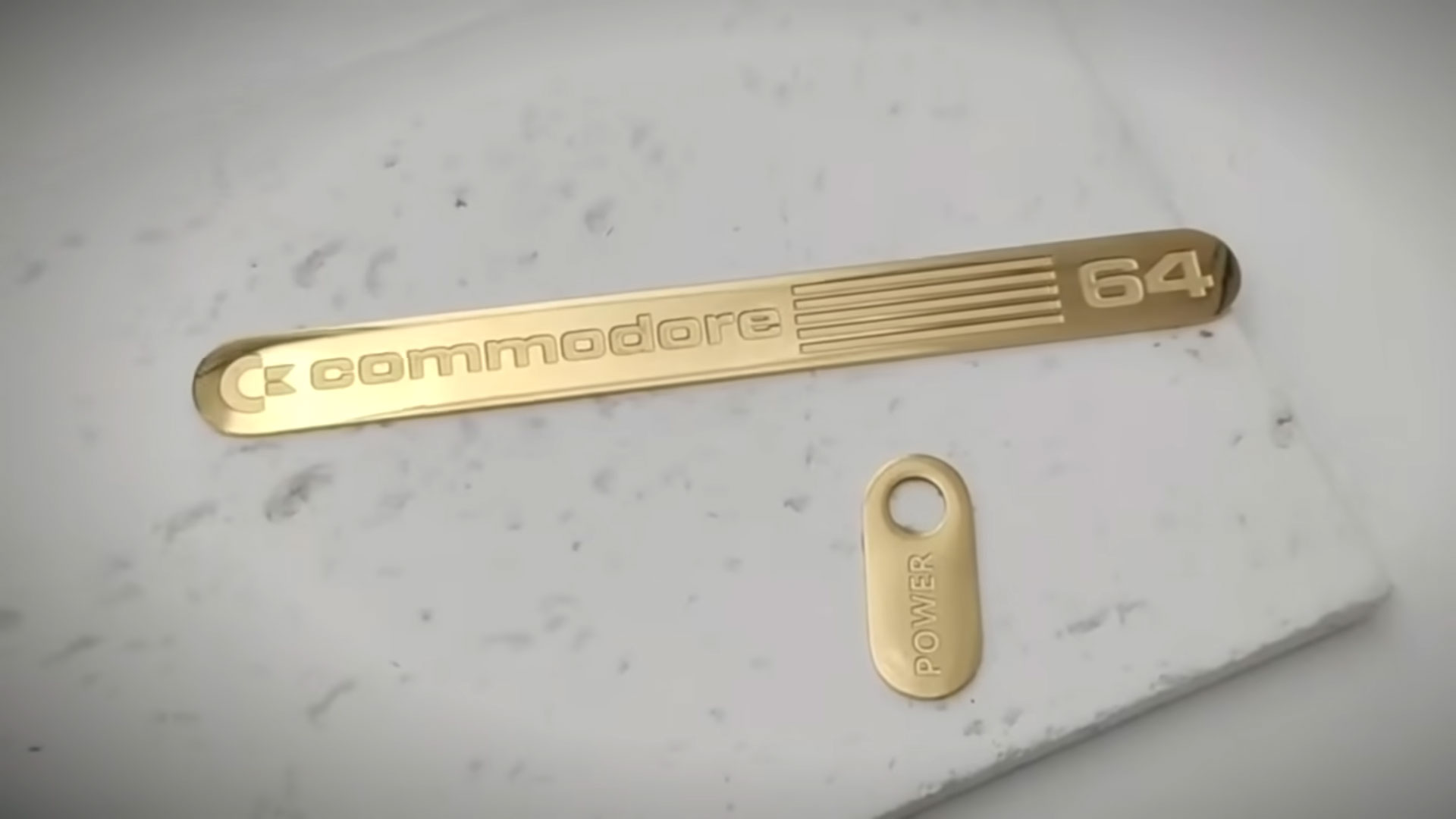
Scenes from the factory floor
During the latest episode from Retro Recipes, we see some of the new C64 machines being prepared in a factory. The manufacturing appears to be in the hands of, or affiliated with, PCB Way, which is based in China.
Get Tom's Hardware's best news and in-depth reviews, straight to your inbox.
We’ve clipped several screenshots showing the C64 Ultimate work-in-progress components and machines. So, if you’ve ordered one of these computers, you might want a peek through the gallery above.
During the factory tour, we see prototype designs and quality control measures in place ahead of mass production. It is encouraging that eyes are on those niggly details, such as alignment and logos. Some scenes also feature components such as RGB components, PSUs, and more.
Simpson shows that he is busy working on the new C64 Ultimate menu system design (at approximately 8 minutes and 30 seconds). Shipping models should boot into the classic Basic prompt, it was noted. Another interesting software feature is that GEOS is now included. This is an ancient software suite that was well-suited for productivity.
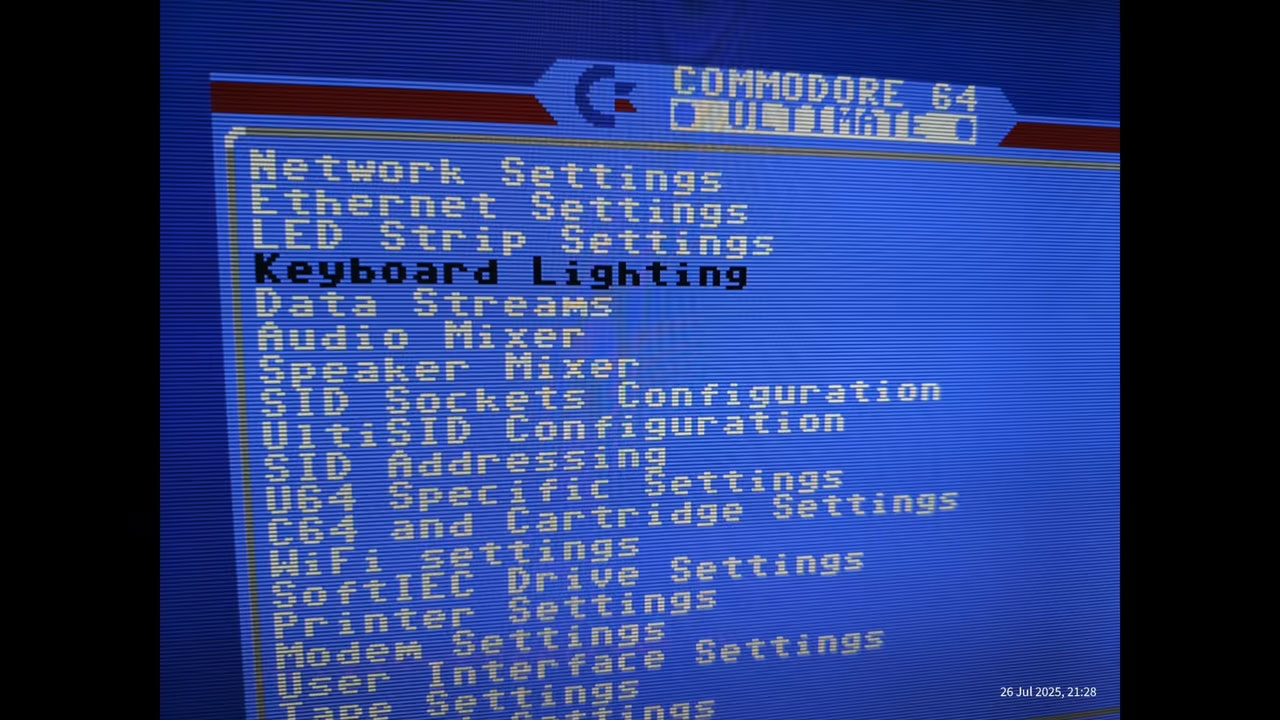
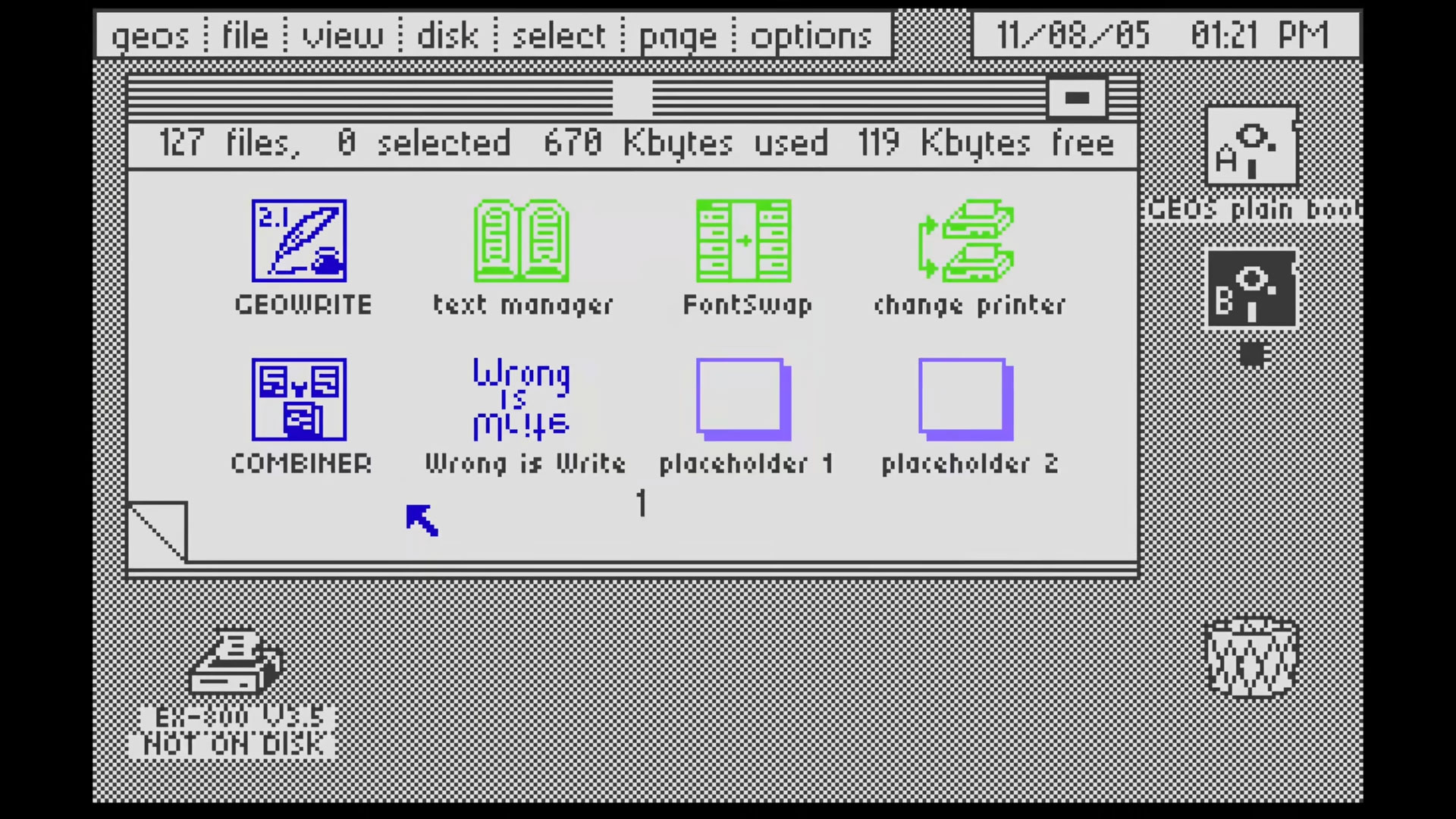
Amiga morsels
Though the C64 legacy is immense, many Commodore fans are more rooted in the Amiga era. Thus, it is interesting to see more Amiga developments and products teased in the new video.
Simpson claims there have been positive meetings about Amiga products and branding. That isn’t really elaborated on. However, later we see a recording of a video chat with Dave Haynie, the Chief Engineer of the Amiga 2000, 3000, and 4000 desktop computers (video, approximately 23 minutes). For some perspective, Haynie was working on the AAA chipset when the Commodore folded in 1994. That would have brought 24-bit graphics and 3D support to the platform, while retaining backwards compatibility. Invited to collaborate, Haynie said he would “love to be involved.” Some parts of the Haynie conversation were obviously deleted, which only heightened anticipation.
In the future, Simpson suggests Commodore will be a ‘Founders Sandbox’ where all the alumni will be able to “brainstorm ideas and projects for potential official release.” Some of those products may (should) touch on the Amiga era. But they may also include calculators, we hear during a Simpson chat with Leonard Tramiel, who was appointed CTO – that’s ‘Chief Tramiel Officer’ - live in another video call that was shared.
Later in the video, you can see footage from the day the deal was signed by the new owners to secure the 47 Commodore trademarks.
This is apparently the end of the three-part series ‘Let’s buy Commodore.’ Simpson signed off by hinting at more modern products to come. The firm’s roadmap includes three or four major releases per year for the next four years.
Follow Tom's Hardware on Google News to get our up-to-date news, analysis, and reviews in your feeds. Make sure to click the Follow button.

Mark Tyson is a news editor at Tom's Hardware. He enjoys covering the full breadth of PC tech; from business and semiconductor design to products approaching the edge of reason.
-
JeffreyP55 Reply
GenZ have a few retro likes. Good for them. I lived that stuff. Except for C64/Amiga forever, which I may use a couple of times a year, there really is no need for me to return to the old.Admin said:The new Commodore is already thriving with $2m in sales in the first week of the C64 Ultimate's debut.
Commodore took in over $2 million during the C64 Ultimate's debut week — roadmap will include three major releases a year : Read more
However, newcomers enjoy! -
nookoool I have no use for some ancient computer but something that might be nice would be putting a celeron or semi modern cpu into some of the keyboard cases of that era. I think like a amiga600, amiga1200, or atari st could still make a good looking computer for the office.Reply -
Joe_Cassara GEOS is an interesting historical artifact, and one I used for productivity in the 80s before I bought an Amiga. But what New Commodore needs to promote and support is C64 OS. Gregory Naçu has done breathtakingly impressive work and deserves our support.Reply -
Steve Nord_ Nobody's posting comparisons to Knuth or ...the couple who worked in Pascal at first.Reply
You'll put your eye out (coding at 320x230.) It's kind of a dare to open more vulns on a system that's pretty insecure or make output that authenticates somehow anyway. LiFi (crypto extensions or less crypto extensions) is ripe for its use? Reasonable documentation would be on e-reader (8 A48, some npus...) with window manager flexibility...but screw it, have a nook for additional foldout digitizer and e-paper references.
All super easy until they get paper hiring Poppy as the industrial designer? -
Findabair The introduction of the Commodore Amiga forced the PC compatible market to adopt and change. The Amiga OS had some major issues which make it challenging to use today. If new hardware and software is released to the public, I hope Peri Fractic will produce a machine with cutting edge technology embedded in conjunction with simplifying the OS.Reply
Having a competing platform isn't an impossible feat. There are enough users that want to see something other than Windows, Apple and Linux. I'll assume there are enough issues with each OS that a new kid on the block can fix, that it may attract more than a couple of people. I'll assume that Commodore will strike out on its own by introducing an OS that bypasses some of the issues found in each competitor's OS.
Some of the benefits that thousands of users enjoyed weren't adopted into Windows for years (IE; try copying a floppy disk and doing something else in Windows at the same time! - it wasn't possible thanks to preemptive multiprocessing being absent). The same type of ingenuity that Commodore had, needs to be present for anything created today. A combination of user friendly software, simplified hardware, simplified hardware expansion, and keeping prices low will attract customers.
I remember seeing a computer with 4096 colors being displayed when I was looking at machines with a maximum display of 16 colors. The attraction was immediate simply due to color palette. Machines today are capable of many more. However, that was when computers were just starting to saturate homes and businesses.
Unfortunately, the Commodore Amiga has its share of issues which need to be simplified for end users.
For example; Memory management is archaic - understanding chip versus fast, what Zorro slots are, etc...wastes time and energy to troubleshoot. Users don't want to spend an ounce of time troubleshooting hardware problems which are immediately present when you get a Guru message on an Amiga. All this stuff should get corrected, if at all possible, to make sure user frustration is minimized by simplifying the methods used to correct problems. Having a location like a 'Device Manager' is a good method to handle hardware. The Commodore Amiga didn't have a singular hardware central nervous system. Therefore, the end user had to delve to far to fix an issue.
The new Commodore has a mountain to climb to make it stand out. I am a user that wants to see the ingenuity flourish, that can go back to a local store to purchase products that I can enjoy, and has a thriving community that is willing to share ideas and promote the hardware and software. There are enough of us that recognize the legacy Commodore had to envision a Commodore reborn that can harness new technology, new software and hardware, and put itself at the pinnacle of evolution. I hope that Peri can manage a monumental feat for anyone else interested in the future of Commodore and its products. -
TerryLaze Reply
Peri didn't get any IP connected to the amiga, that's a whole different company (two actually) that owns that.Findabair said:The introduction of the Commodore Amiga forced the PC compatible market to adopt and change. The Amiga OS had some major issues which make it challenging to use today. If new hardware and software is released to the public, I hope Peri Fractic will produce a machine with cutting edge technology embedded in conjunction with simplifying the OS.
Having a competing platform isn't an impossible feat. There are enough users that want to see something other than Windows, Apple and Linux. I'll assume there are enough issues with each OS that a new kid on the block can fix, that it may attract more than a couple of people. I'll assume that Commodore will strike out on its own by introducing an OS that bypasses some of the issues found in each competitor's OS.
Some of the benefits that thousands of users enjoyed weren't adopted into Windows for years (IE; try copying a floppy disk and doing something else in Windows at the same time! - it wasn't possible thanks to preemptive multiprocessing being absent). The same type of ingenuity that Commodore had, needs to be present for anything created today. A combination of user friendly software, simplified hardware, simplified hardware expansion, and keeping prices low will attract customers.
I remember seeing a computer with 4096 colors being displayed when I was looking at machines with a maximum display of 16 colors. The attraction was immediate simply due to color palette. Machines today are capable of many more. However, that was when computers were just starting to saturate homes and businesses.
Unfortunately, the Commodore Amiga has its share of issues which need to be simplified for end users.
For example; Memory management is archaic - understanding chip versus fast, what Zorro slots are, etc...wastes time and energy to troubleshoot. Users don't want to spend an ounce of time troubleshooting hardware problems which are immediately present when you get a Guru message on an Amiga. All this stuff should get corrected, if at all possible, to make sure user frustration is minimized by simplifying the methods used to correct problems. Having a location like a 'Device Manager' is a good method to handle hardware. The Commodore Amiga didn't have a singular hardware central nervous system. Therefore, the end user had to delve to far to fix an issue.
The new Commodore has a mountain to climb to make it stand out. I am a user that wants to see the ingenuity flourish, that can go back to a local store to purchase products that I can enjoy, and has a thriving community that is willing to share ideas and promote the hardware and software. There are enough of us that recognize the legacy Commodore had to envision a Commodore reborn that can harness new technology, new software and hardware, and put itself at the pinnacle of evolution. I hope that Peri can manage a monumental feat for anyone else interested in the future of Commodore and its products.
Also even if they had it, they have no where near the resources to even start doing any of the things you bring up.
The c64 ultimate was a pre existing design, or probably a bunch of them combined, that peri just managed to find a production facility for and is financing by people pre ordering (and pre paying) them.

